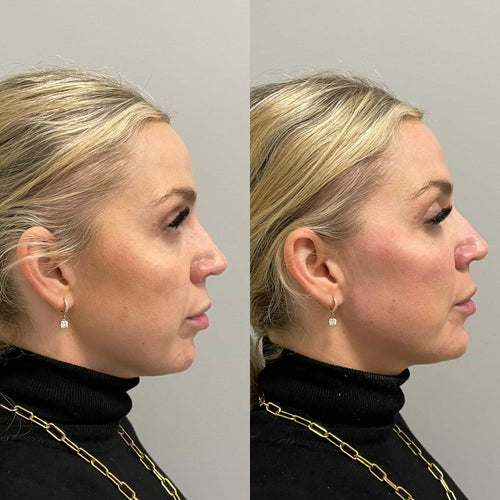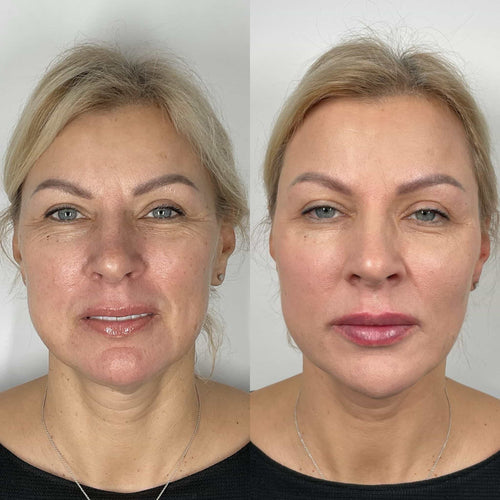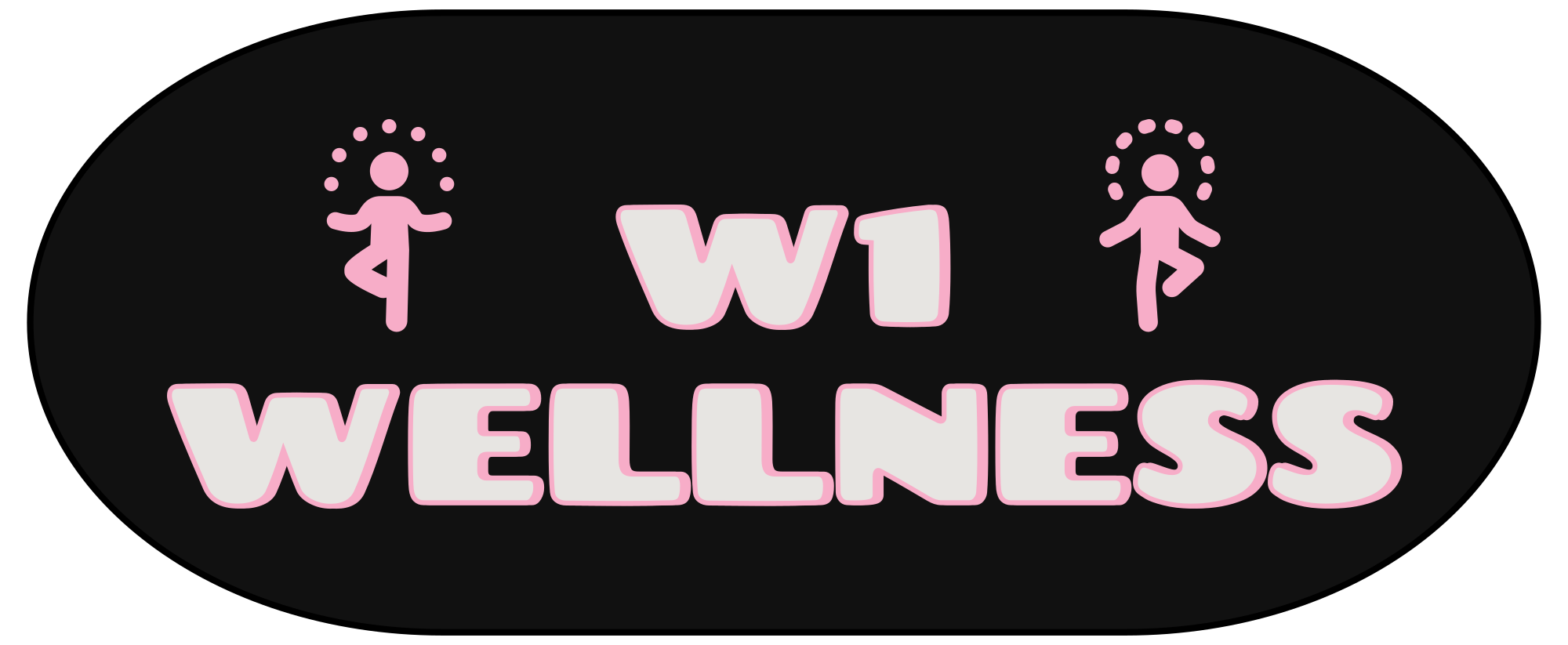Schedule a Dermal Filler Session with Dr. Laura Geige
Understanding Flared Nostrils
Causes
Flared nostrils occur when the nostrils widen, sometimes appearing to flare outward, particularly when breathing through the nose.
While often a harmless cosmetic variation, flared nostrils can be a symptom of underlying medical conditions or contribute to breathing difficulties. Understanding the causes is essential for determining appropriate treatment options.
Here are some common causes of flared nostrils:
-
Genetics
-
Anatomical variations:
Some individuals naturally have wider nostrils due to the shape and structure of their nasal bones and cartilage.
-
Nasal valve collapse:
This occurs when the cartilage supporting the nostrils weakens or collapses inward, narrowing the airway. It can be caused by:
-
Aging
-
Genetics
-
Trauma
-
Underlying medical conditions like allergies, rhinitis, or infections.
-
-
Medications:
Certain medications, like nasal decongestants used for prolonged periods, can cause rebound nasal congestion and potentially contribute to flared nostrils.
-
Respiratory conditions:
-
Asthma
-
Chronic obstructive pulmonary disease (COPD)
-
Pneumonia
These conditions can lead to increased airflow through the nose, resulting in nostrils flaring.
-
-
Stress and Anxiety:
In some cases, flared nostrils may be a response to stress or anxiety, causing rapid breathing and widening of the nostrils.
-
Exercise:
During strenuous activity, breathing becomes more labored, leading to increased air intake and potential nostril flaring.

Symptoms
Flared nostrils, medically known as “nasal flaring,” occur when the nostrils widen or dilate during breathing.
While often associated with respiratory distress, nasal flaring can also be a normal physiological response in certain situations.
Understanding flared nostrils requires looking at both the underlying causes and the accompanying symptoms.
**Causes of Flared Nostrils:**
1. **Respiratory Distress:** This is the most common reason for flared nostrils. When breathing becomes labored or difficult, the body tries to increase airflow by widening the nasal passages. Conditions that can cause respiratory distress include asthma, bronchiolitis, pneumonia, congestive heart failure, and upper respiratory infections.
2. **Nasal Obstruction:** Anything that blocks the nasal passageways can lead to flaring. This can be caused by a stuffy nose due to allergies, a cold, or sinusitis. Nasal polyps, tumors, or deviated septa (a crooked partition within the nose) can also obstruct airflow.
3. **Exercise:** During strenuous physical activity, breathing becomes more rapid and deeper, leading to nasal flaring as the body seeks to maximize oxygen intake.
4. **Emotional Stress or Anxiety:** Increased stress or anxiety can trigger shallow breathing patterns, potentially causing nostrils to flare.
5. **Sleep Apnea:** During episodes of sleep apnea, when breathing repeatedly stops and starts, individuals may experience nasal flaring as a response to the interrupted airflow.
**Symptoms Accompanying Flared Nostrils:**
The symptoms that appear alongside flared nostrils can provide valuable clues about the underlying cause:
– **Breathing difficulties:** Shortness of breath, wheezing, gasping for air, or labored breathing are common signs of respiratory distress.
– **Coughing and/or Sneezing:** These can be indicators of allergies, infections, or irritants in the nasal passages.
– **Runny Nose or Nasal Congestion:** A stuffy nose accompanied by discharge can suggest a cold, sinus infection, or allergic reaction.
– **Chest Discomfort or Tightness:** This may indicate asthma or heart problems.
– **Excessive Daytime Sleepiness:** This symptom can be associated with sleep apnea.
– **Headache and Fatigue:** These symptoms often accompany sinusitis or other nasal obstructions.
Book a Dermal Filler Appointment with Dr. Laura Geige Today
**Seeking Medical Advice:**
While occasional nasal flaring during exercise is normal, persistent flaring, especially when accompanied by other concerning symptoms, warrants a medical evaluation. A doctor can help determine the underlying cause and recommend appropriate treatment.
Lifestyle Modifications for Relief
Humidifiers and Warm Compresses
Treating flared nostrils often involves addressing the underlying cause rather than directly focusing on the appearance.
**Lifestyle Modifications** can be highly effective in managing conditions that contribute to nasal flaring, such as allergies and congestion.
*Avoiding allergens* like pollen, dust mites, and pet dander can reduce allergic reactions that lead to swollen nasal passages.
*Maintaining a healthy weight* is important as obesity can worsen sleep apnea, which often causes mouth breathing and flared nostrils.
*Quitting smoking* helps eliminate irritants that inflame the nasal tissues.
**Humidifiers** can provide relief by adding moisture to the air, particularly during dry seasons or in environments with low humidity. This can help thin mucus and alleviate congestion, making it easier for you to breathe through your nose.
**Warm Compresses** applied to the bridge of your nose and forehead can help soothe inflammation and reduce nasal congestion, promoting easier breathing.
Saline Rinse
Flared nostrils can be caused by various factors, including allergies, congestion, and even anatomical differences.
Lifestyle modifications can often help manage flared nostrils and alleviate discomfort.
Managing allergens is crucial if your flared nostrils are allergy-related. Identify and avoid known triggers such as pollen, dust mites, pet dander, or mold.
If congestion contributes to flared nostrils, consider using a humidifier to add moisture to the air, especially during dry seasons. Staying hydrated by drinking plenty of fluids can also help thin mucus and reduce congestion.
Elevating your head with an extra pillow while sleeping can promote drainage and minimize congestion throughout the night.
Saline rinses are an effective way to clear nasal passages and reduce inflammation.
To perform a saline rinse, mix a teaspoon of salt in a cup of warm water. Use a neti pot or squeeze bottle to gently flush the solution through one nostril while simultaneously tilting your head over a sink or bowl. Repeat on the other side.
Saline rinses can help loosen mucus, remove irritants, and soothe inflamed nasal tissues, contributing to reduced flaring of nostrils.
While lifestyle modifications and saline rinses can be helpful, it’s important to consult a doctor if your flared nostrils are persistent, severe, or accompanied by other symptoms such as difficulty breathing, facial pain, or discharge.
Avoiding Irritants
Flared nostrils, often accompanied by nasal congestion and breathing difficulties, can be a symptom of various underlying conditions like allergies, infections, or anatomical factors. While medical treatment may be necessary in some cases, lifestyle modifications and irritant avoidance can significantly contribute to relief.
One key strategy is identifying and eliminating potential irritants that trigger your flared nostrils. Common culprits include:
-
Pollens: Keep windows closed during peak pollen seasons, use air purifiers with HEPA filters, and shower after spending time outdoors.
-
Dust mites: Encase mattresses and pillows in dust mite-proof covers, wash bedding frequently in hot water, and minimize clutter that harbors dust mites.
-
Pet dander: Limit pet access to bedrooms, bathe pets regularly, and use air purifiers with HEPA filters to remove pet dander from the air.
-
Mold: Control indoor humidity levels below 50%, promptly fix leaks, and ensure proper ventilation in bathrooms and kitchens.
-
Smoke: Avoid exposure to secondhand smoke and actively participate in smoke-free environments.
-
Strong odors: Limit exposure to harsh chemicals, perfumes, and scented products that may irritate nasal passages.
Book a Dermal Filler Session with Dr. Laura Geige Today
In addition to avoiding irritants, consider these lifestyle modifications:
-
Humidifier use: Adding moisture to the air can help thin mucus and ease breathing difficulties. Use a cool-mist humidifier as hot steam can worsen nasal congestion.
-
Saline rinse: Rinsing your nasal passages with a saline solution can effectively flush out allergens, irritants, and mucus, providing relief from stuffiness and inflammation.
-
Hydration: Drinking plenty of fluids helps thin mucus and makes it easier to drain.
-
Elevate your head while sleeping: Using an extra pillow can help reduce congestion and promote drainage during sleep.
Remember, if you experience persistent or severe flared nostrils, consult a medical professional to rule out any underlying medical conditions and receive appropriate treatment.
When to Seek Medical Attention
Allergies or Infections
Flared nostrils can be caused by a variety of factors, some harmless and others more serious. While home remedies can often help alleviate minor flaring, it’s crucial to understand when seeking medical attention is necessary.
Common causes of flared nostrils include allergies, infections, nasal congestion, and anatomical factors like deviated septum or enlarged turbinates. Allergies trigger an immune response, leading to inflammation and swelling in the nose. Infections, such as colds or sinusitis, also cause inflammation and mucus buildup, contributing to nostril flaring.
When to Seek Medical Attention:
If flared nostrils are accompanied by any of the following symptoms, it’s essential to consult a doctor:
-
Severe or persistent congestion
-
Facial pain or pressure
-
Thick, discolored nasal discharge (green, yellow, or bloody)
-
Fever
-
Difficulty breathing
-
Loss of smell or taste
-
Sudden onset of symptoms
These symptoms could indicate a more serious underlying condition requiring medical intervention.
Allergies:
If you suspect allergies are causing your flared nostrils, over-the-counter antihistamines or nasal corticosteroids may provide relief. Identifying and avoiding allergy triggers is also crucial. In severe cases, an allergist may recommend allergy shots.
Infections:
For infections, antibiotics may be necessary if bacterial involvement is suspected. Decongestants and saline rinses can help relieve congestion and inflammation. Rest, hydration, and warm compresses are also helpful.
Structural Issues
Determining when to seek medical attention for flared nostrils depends on a variety of factors, including the severity of the flaring, associated symptoms, and underlying causes.
Mild flaring that occurs only occasionally or during exertion might not warrant immediate medical attention. However, if flaring is persistent, bothersome, or accompanied by other symptoms like difficulty breathing, nosebleeds, facial pain, or snoring, it’s essential to consult a doctor.
Flared nostrils can be caused by various factors, including:
• **Genetics:** Some individuals are simply predisposed to having flared nostrils due to their bone structure.
• **Septal Deviations:** A crooked or deviated septum (the wall separating the nasal passages) can force the nose to flare outwards to compensate for airflow obstruction.
• **Nasal Valve Collapse:** This condition occurs when the tissues around the nostrils collapse inward, narrowing the airway and causing flaring.
• **Enlarged Turbinates:** The turbinates are bony structures inside the nose that help humidify and warm incoming air. Excessive enlargement can obstruct airflow and lead to flaring.
• **Rhinoplasty (Nose Job):** In some cases, flared nostrils may be a complication of rhinoplasty surgery.
Treatment for flared nostrils depends on the underlying cause.
For genetic flaring that is not causing any problems, treatment might not be necessary. However, if it causes cosmetic concerns, rhinoplasty surgery can reshape the nose and reduce flaring.
In cases of septal deviations or nasal valve collapse, correcting these structural issues may involve:
• **Septoplasty:** Surgical straightening of the septum
• **Rhinoseptoplasty:** A combination of septoplasty and rhinoplasty to address both the septum and the nose’s shape
For enlarged turbinates, treatments may include:

• **Turbinate Reduction Surgery:** Minimizing the size of the turbinates
• **Radiofrequency Ablation:** Using heat to shrink turbinate tissue
It’s important to consult with a qualified medical professional, such as an otolaryngologist (ENT doctor), to determine the best course of action for your specific situation.
The Lady London Detailed Weddings LA Kurious Kittens
- Neauvia Hydro Deluxe Skin Booster Treatments Near Norwood, Surrey - December 22, 2024
- How Do You Treat Flared Nostrils? - December 14, 2024
- How Painful Is Lip Fillers? - December 10, 2024
